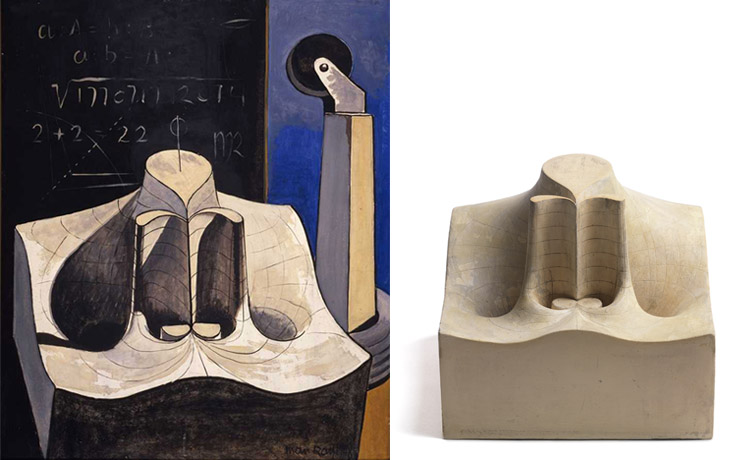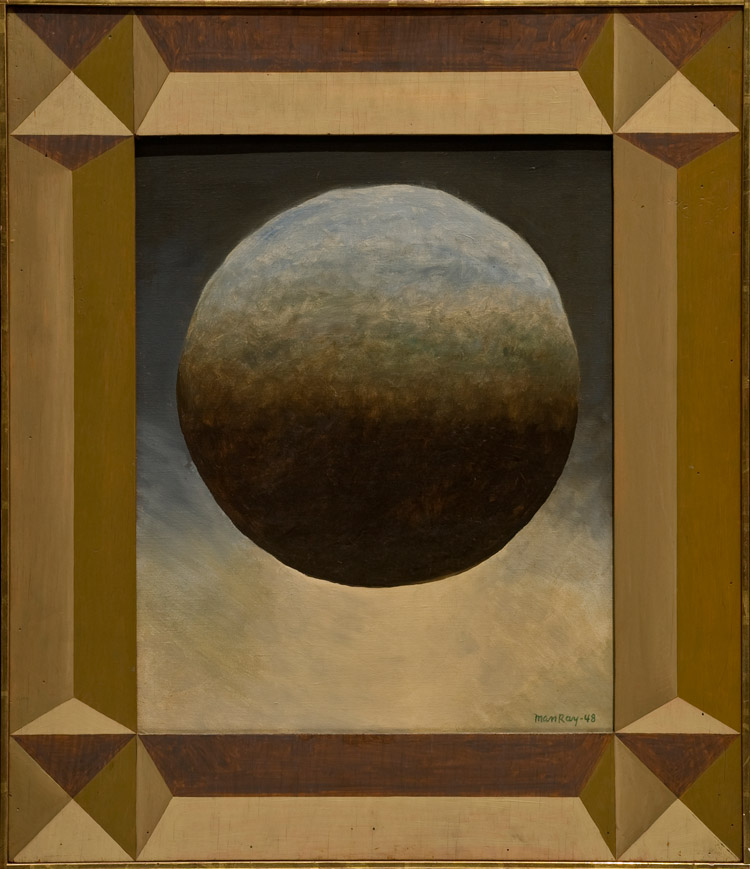
(left) Man Ray, Shakespearean Equation, Julius Caesar, 1948. Oil on masonite, 24 × 19 3/4 in. The Rosalind & Melvin Jacobs Collection, New York. © Man Ray Trust / Artists Rights Society (ARS), NY / ADAGP, Paris 2015 (right) Mathematical Object: Real Part of the Function w=e, c. 1900. Plaster, 9 × 12 3/8 × 7 1/2 in. Brill-Schilling Collection. Institut Henri Poincaré, Paris. Photo: Elie Posner
Julius Caesar epitomizes Man Ray’s inventive approach to humanizing and translating mathematical models into enigmatic forms in his Shakespearean Equations series. In this composition (at left), he mapped out the undulating lines defining the model, creating a headless torso and casting the transformed object as the central character in a theatrical tableau. Note on the blackboard behind the imposing form barely discernable mathematical equations such as “2 + 2 = 22.” These seemingly illogical mathematical notations embed further mystery in Man Ray’s characteristically enigmatic manner. In the space between two relational formulations on the blackboard the artist posed the philosophical question and unsolved problem of the “square root of Man Ray.” The answer to and meaning of this conundrum is left for us to decipher for ourselves.
Of his Shakespearean Equations, Man Ray once stated “In painting [the models], I did not copy them literally but composed a picture in each case, varying the proportions, adding color, ignoring the mathematical intent, and introducing an irrelevant form sometimes, as a butterfly or the leg of a table.” In his rendering of Julius Caesar, he recycled the table leg employed in his 1945 object Obelisk see Oculist (Pied à terre) to evoke the scepter of a triumphant general.
Do you see anything else in this painting that might evoke Shakespeare’s Julius Caesar?
Wendy Grossman, Exhibition Curator



